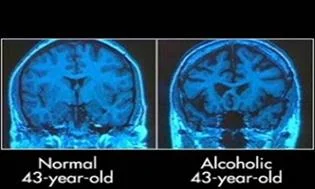Niacinamide reduces liver damage in alcohol addiction.
Niacinamide is a specific form of vitamin B3 that has shown to address many of the issues addicts need to rebalance post addiction - and a key nutrient for alcohol addiction recovery:
- Blood sugar: by proteting the Beta cells of the islets of Langerhans
- Rapid aging: by protecting DNA
- Liver damage: by inhibiting the toxic of effects of ethanol (alcohol)
- Aggressiveness reduction: by stimulating the conversion of lactic acid to pyruvic acid)
- Anxiety: by enhancing the ability of GABA to bind to Benzodiazepine receptors within the brain)
- Brain: by exerting potent antioxidant effects in brain
- Sleep: by binding to the Benzodiazepine receptors of the brain
Niacinamide is also called nicotinamide, niamide and nicotic acid amide. It is important to be aware that niacinamide is NOT the same is niacin. They have slightly different benefits attached to each form of b-vitamin, which they both are. In today's post we are strictly focusing on niacinamide - NOT to be confused with niacin.
How much should you take?
It depends on your body, but generally standard protocols range from 2,000 - 3,000 mg Niacinamide per day in order to inhibit liver damage in alcohol addiction and retard the aging process.
Rapid aging is a core issue that needs to be addressed in the treatment of any type of addiction, and for this niacinamide has proven efficient.
So how does niacinamide work exactly? Well, for those of you interested in the science aspect of how this nutrient functions as a life extension agent, here is the breakdown:
Brain scan showing the literally lacking brain following alcohol addiction. Niacinamide has shown to have strong protective brain health effects, and thus a key nutrient in post-recovery nutrition restoration.
- Niacinamide increases levels of Nicotinamide Adenine Dinucleotide (NAD)
- NAD is a cofactor for the activity of Sir2p, an enzyme that upregulates the deacetylation (removal of Acetyl units) from Chromatin.
- Chromatin (when deacetylated) provides a "protective over" to Deoxyribonucleic Acid (DNA)
- Extrachromasomal rDNA circles - which stimulate a process known as Gene Silencing and therefore accelerate the aging process - are unable to issue "Celle strangulation and cellular death" messages to DNA that is protected by deacetylated Chromatin.
Natural source of of niacinamide are: spirulina, baker's yeast, tuna, venison and duck.
However, the amounts found in food is not sufficient to reap the therapeutic above mentioned effects of niacinamide in addiction treatment.
References: Clin Liver Dis. 2012 Nov; 16(4): 667–685. Addict Sci Clin Pract. 2012; 7(1): 12. Alcohol Alcohol. 2014 Jan-Feb;49(1):38-41. Alcohol Alcohol. 2014 May-Jun;49(3):238-50. Am J Clin Nutr. 1989 Aug;50(2):364-9.

